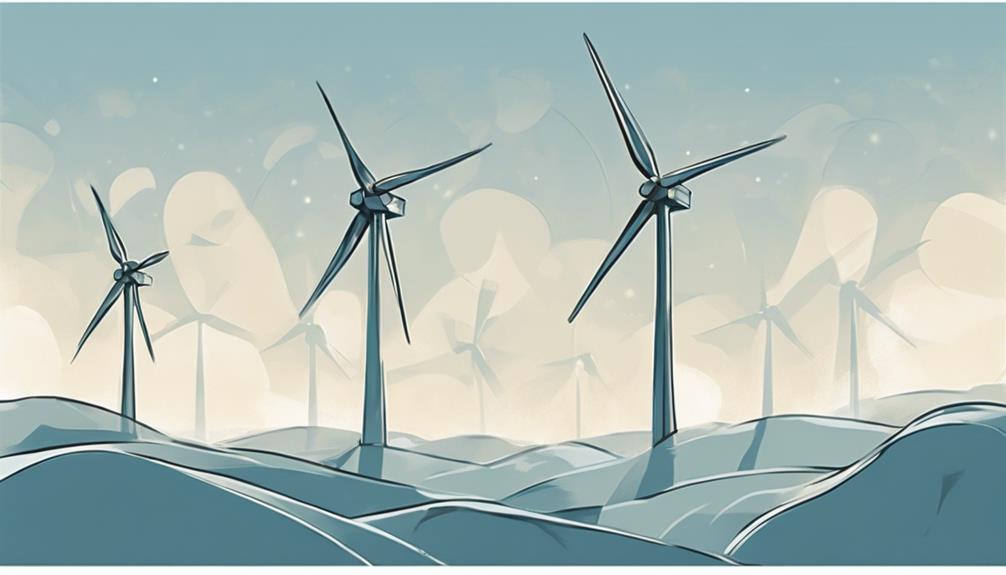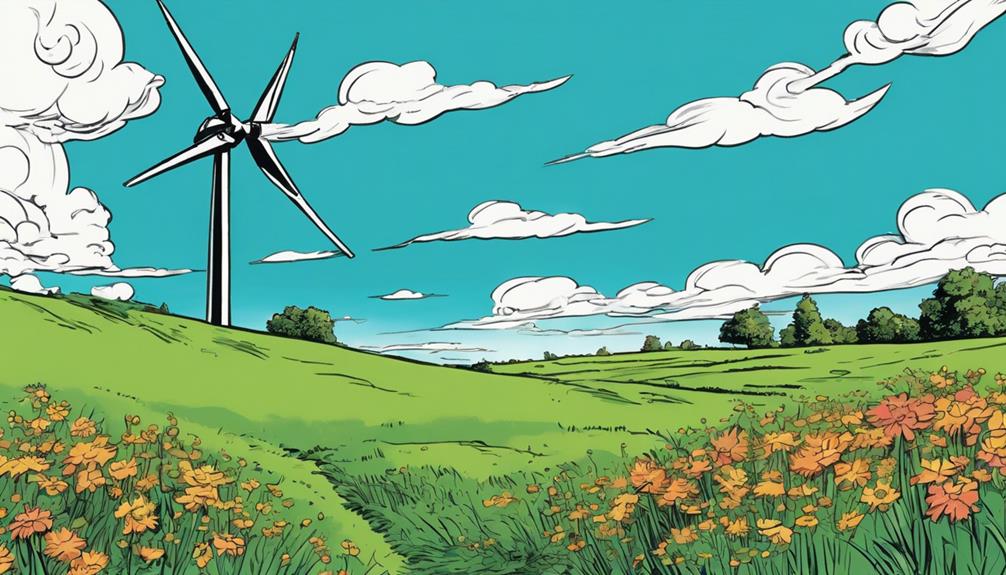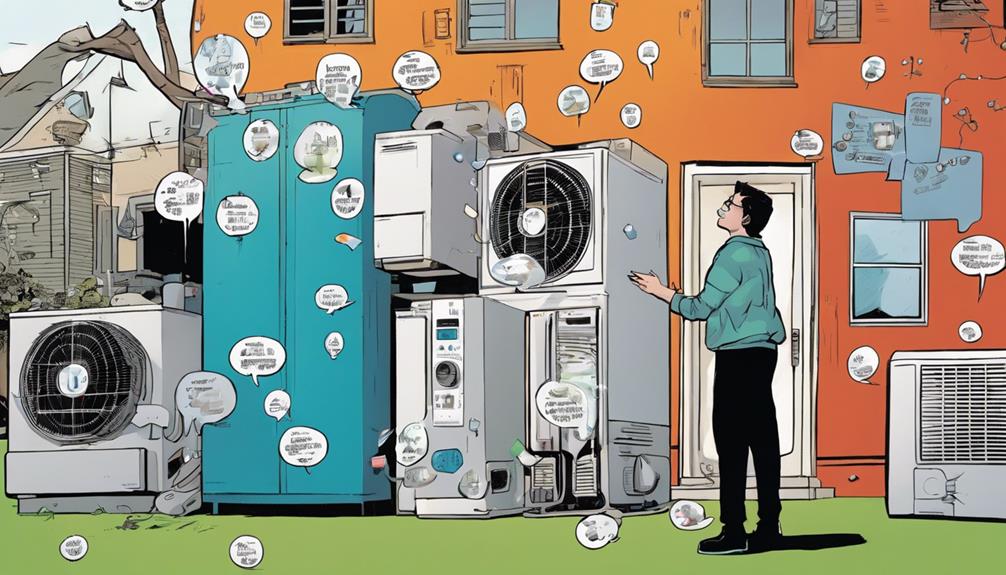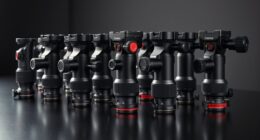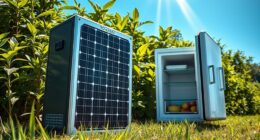When it comes to harnessing the best wind energy, the arrangement of turbine blades plays a pivotal role. Different blade counts offer unique advantages and disadvantages that can greatly impact energy production, cost-effectiveness, and overall performance. Four-blade turbines offer higher efficiency, while five-blade turbines excel in low wind conditions. Six-blade turbines boast a higher lift-to-drag ratio, and two-blade turbines are cost-effective and easy to install. Three-blade turbines, the industry standard, provide a balance between energy output and cost savings. As the quest for the best wind energy continues, understanding the strengths and weaknesses of each configuration is key to maximizing potential.
Key Takeaways
- Four-blade turbines offer higher efficiency and energy production, making them suitable for high-wind conditions.
- Three-blade turbines provide a balance between energy output and cost savings, making them the industry standard.
- Six-blade turbines have a higher lift-to-drag ratio, enhancing efficiency in moderate to strong winds.
- Five-blade turbines excel in low wind conditions, capturing energy effectively in consistent wind patterns.
- Two-blade turbines are cost-effective and easy to install, offering a balance between affordability and performance.
Blade Configuration Efficiency and Performance
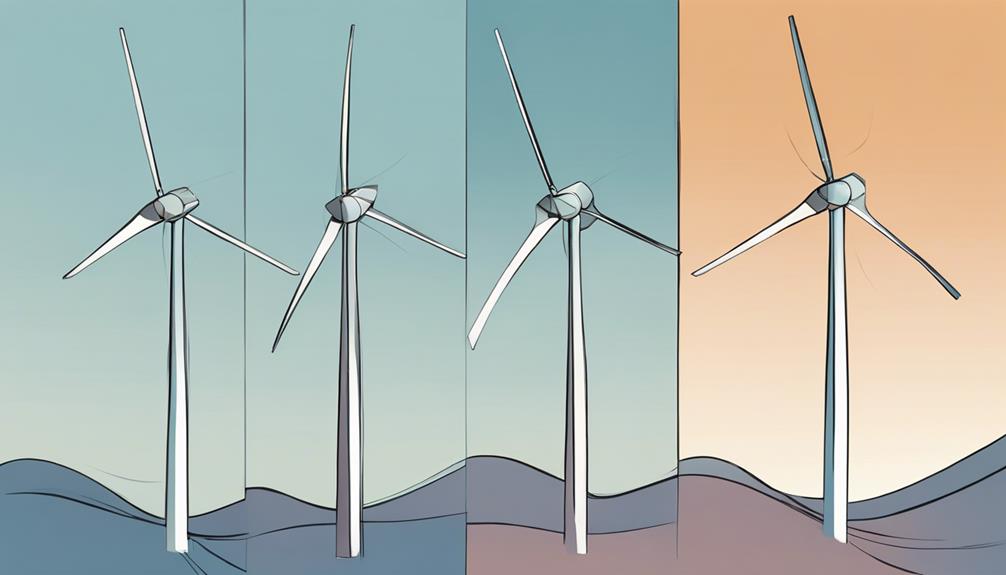
When it comes to wind energy production, the number of blades on a turbine greatly impacts its efficiency and performance, with different configurations excelling in various wind conditions.
Four-blade wind turbines offer higher efficiency and energy production compared to other configurations.
Five-blade turbines, on the other hand, excel in low wind conditions due to their ability to capture energy at lower speeds.
Six-blade turbines typically have a higher lift-to-drag ratio, enhancing their overall efficiency in converting wind energy into electricity.
Meanwhile, two-blade wind turbines are cost-effective and easier to install, while three-blade turbines are more efficient and quieter, providing better performance in various wind conditions.
Advantages of Different Configurations
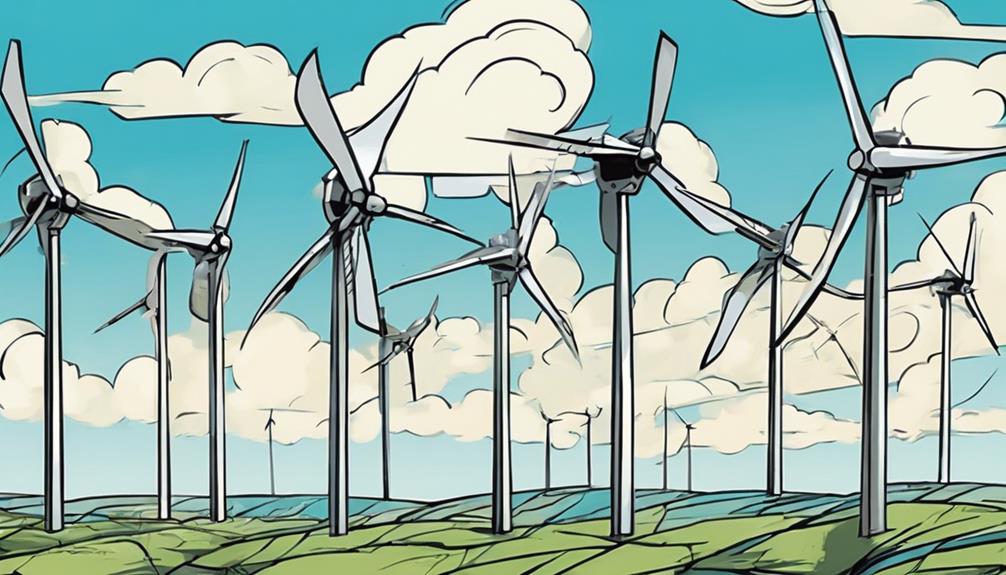
Different blade configurations offer unique advantages. Four-blade turbines boast enhanced stability, reduced vibration, and quieter operation, leading to longer lifespan and lower maintenance costs.
Here are some key benefits of various blade configurations:
- Five-blade turbines: Higher starting torque, suitable for locations with consistent wind patterns, and provide a steady source of renewable energy.
- Six-blade turbines: Maintain peak performance in moderate to strong winds and are suitable for locations with fluctuating wind speeds and gusty conditions.
- Two-blade and three-blade turbines: Offer a balance between cost-effectiveness and efficiency, with two-blade turbines being easy to install and three-blade turbines providing higher energy output and reliability.
Each configuration has its strengths, and choosing the right one depends on the specific wind conditions and energy generation goals.
Disadvantages and Challenges
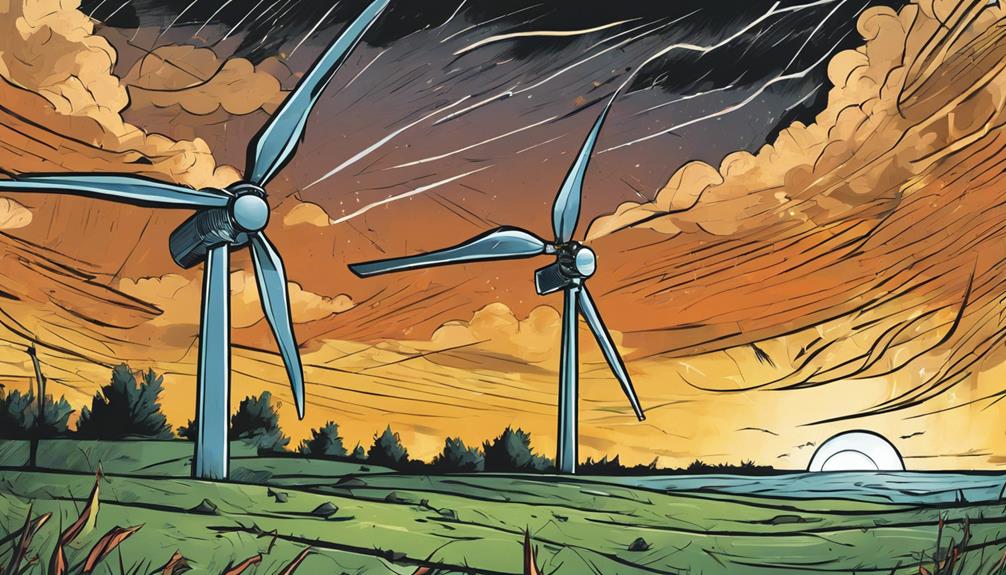
While five-blade turbines excel in low wind conditions, they also come with higher upfront costs, complex maintenance, performance limitations in high winds, and increased noise levels. Additionally, the installation process for five-blade turbines can be time-consuming and require specialized expertise. These drawbacks highlight the importance of considering the trade-offs between different blade configurations.
| Blade Configuration | Disadvantages |
|---|---|
| Five-blade | Higher upfront costs, complex maintenance, performance limitations in high winds, increased noise levels |
| Two-blade | Lower energy output, reduced stability |
| Six-blade | Higher material costs, potential for increased drag forces |
Cost-Effectiveness and Efficiency
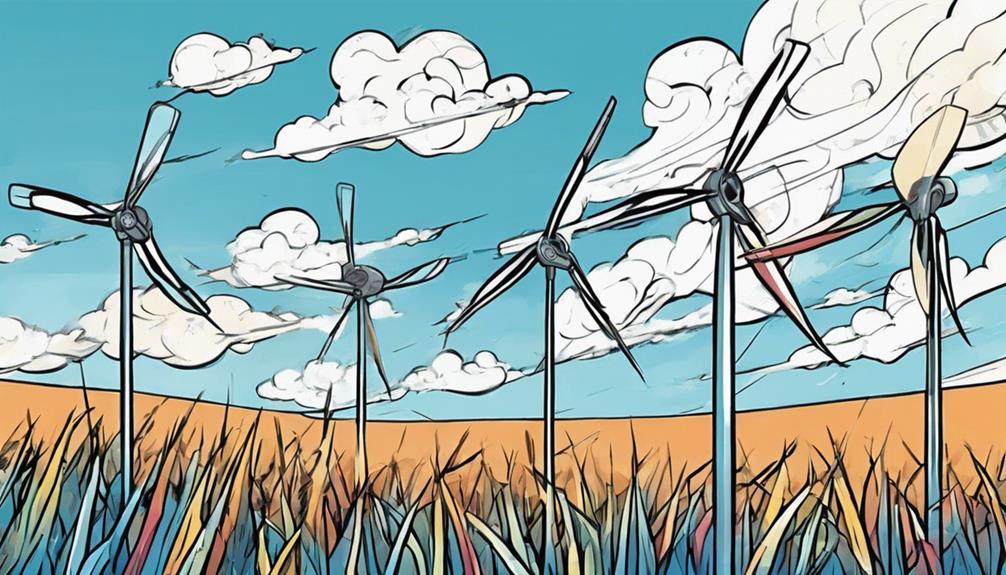
Two-blade wind turbines stand out for their cost-effectiveness, efficiency in noise reduction, and reduced maintenance costs due to their simple construction. This design offers a unique balance between affordability and performance, making it an attractive option for those looking to optimize their wind energy production.
Some key benefits of two-blade turbines include:
- Lower upfront costs: Simplified design reduces material and manufacturing expenses.
- Quieter operation: Fewer blades result in less noise pollution.
- Easy maintenance: Simple construction makes repairs and replacements more straightforward.
Popular Choice and Performance
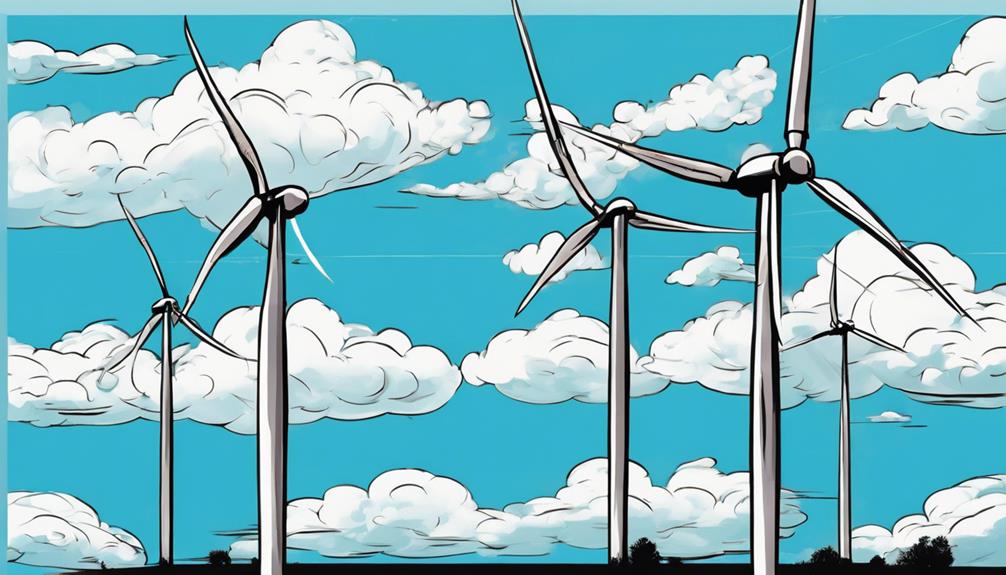
Three-blade wind turbines have emerged as the most popular choice for wind energy production, offering a superior balance between energy output and cost savings compared to two-blade designs. This configuration has proven to be highly efficient, capturing wind energy more effectively while reducing noise pollution. The three-blade design has become the standard in the industry, and its widespread adoption is a tribute to its performance.
| Blade Configuration | Energy Output | Noise Level | Cost Savings |
|---|---|---|---|
| Two-Blade | Lower | Higher | Moderate |
| Three-Blade | Higher | Lower | Higher |
| Four-Blade | Highest | Lowest | Highest |
| Five-Blade | Moderate | Moderate | Moderate |
The table above highlights the key benefits of each blade configuration, showcasing the three-blade design's best balance of energy output, noise reduction, and cost savings.
Frequently Asked Questions
How Do Environmental Factors Influence the Choice of Blade Configuration?
Environmental factors greatly impact the choice of blade configuration, as varying wind speeds, directions, and turbulence require tailored designs to maximize energy production and minimize maintenance, ensuring best performance in diverse environmental conditions.
Can Blade Configuration Be Adjusted for Changing Wind Patterns?
Like a sailor adjusting sails to harness shifting winds, blade configurations can be adapted to optimize energy production in response to changing wind patterns, ensuring maximum efficiency and reliability in varying environmental conditions.
Are There Any Hybrid Blade Configurations for Optimal Performance?
They explore hybrid blade configurations, combining benefits of different designs, to optimize performance in varying wind conditions, potentially offering enhanced efficiency and energy production.
What Is the Impact of Blade Configuration on Turbine Lifespan?
She notes that blade configuration greatly affects turbine lifespan, with four-blade turbines offering enhanced stability, reduced vibration, and quieter operation, leading to a longer lifespan and lower maintenance costs.
Can Blade Configuration Be Customized for Specific Wind Farm Layouts?
Yes, blade configuration can be customized for specific wind farm layouts, considering factors like wind speed, direction, and turbine spacing to optimize energy production and reduce interference.
How Do Lighter Wind Turbine Blades Impact Blade Configurations for Wind Energy Efficiency?
Lighter wind turbine blades can have a significant impact on blade configurations for wind energy efficiency. By using innovative wind turbine blades lighting strategies, engineers can optimize the design to harness more energy from the wind. This can lead to increased overall efficiency and improved energy production for wind farms.
How Do Different Blade Configurations Impact the Efficiency of Wind Turbines Compared to Traditional Power Plants?
When it comes to energy production, the blade configuration of wind turbines vs power plants can greatly impact efficiency. Wind turbines, with their aerodynamic designs, harness wind power more effectively than traditional power plants, which rely on combustion. This makes wind turbines a more efficient and sustainable source of energy.
Conclusion
To sum up, the pursuit of peak wind energy generation relies on the careful selection of blade configurations. While each design has its strengths and weaknesses, research suggests that a three-blade configuration may be the ideal choice, offering a balance between energy production and material costs.
Notably, a study by the National Renewable Energy Laboratory found that three-blade turbines can increase energy output by up to 5% compared to two-blade designs, making them a compelling choice for wind farm developers.
